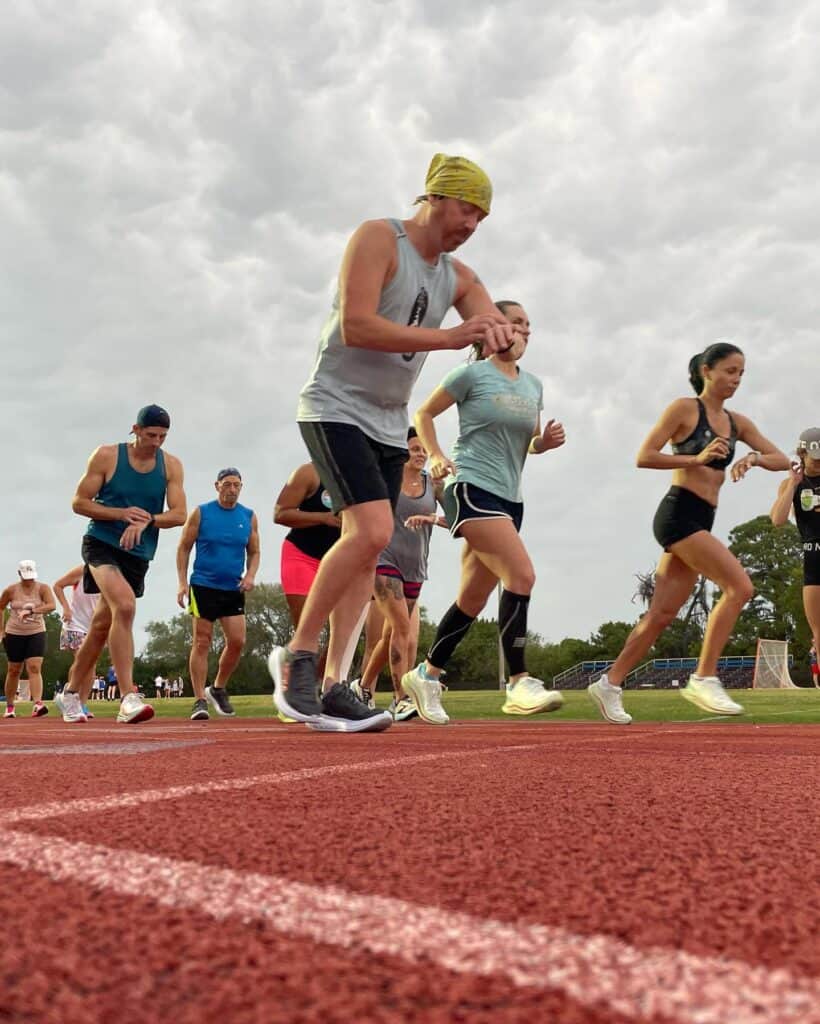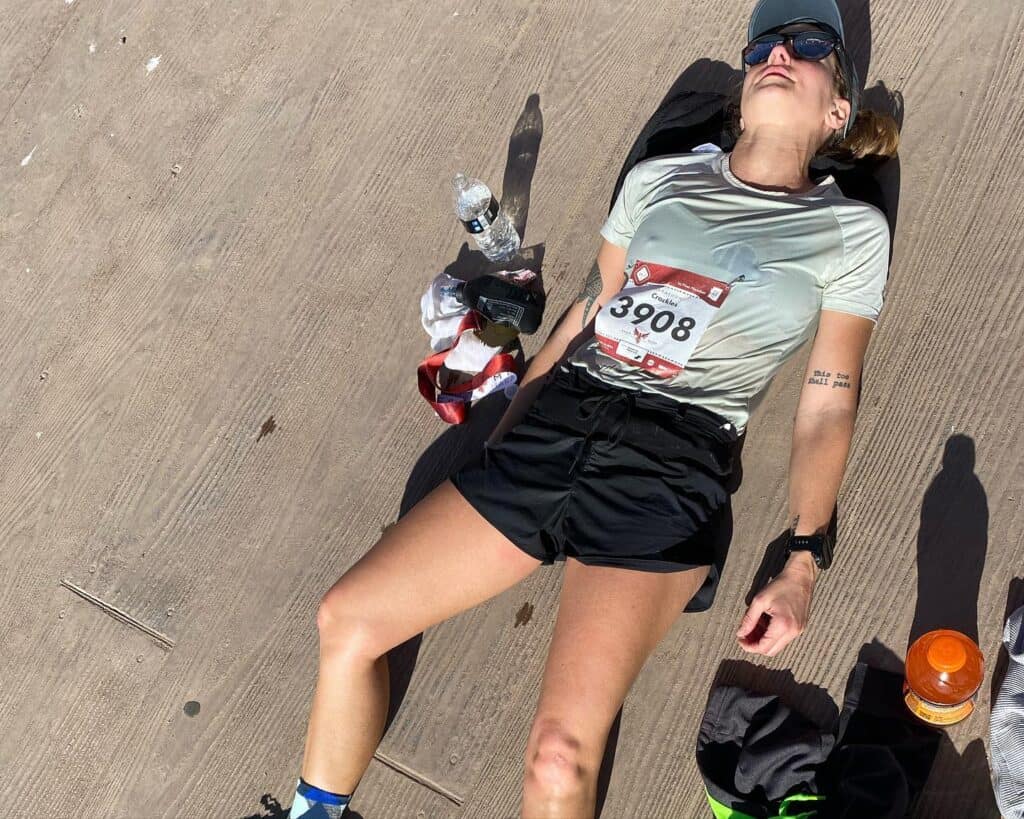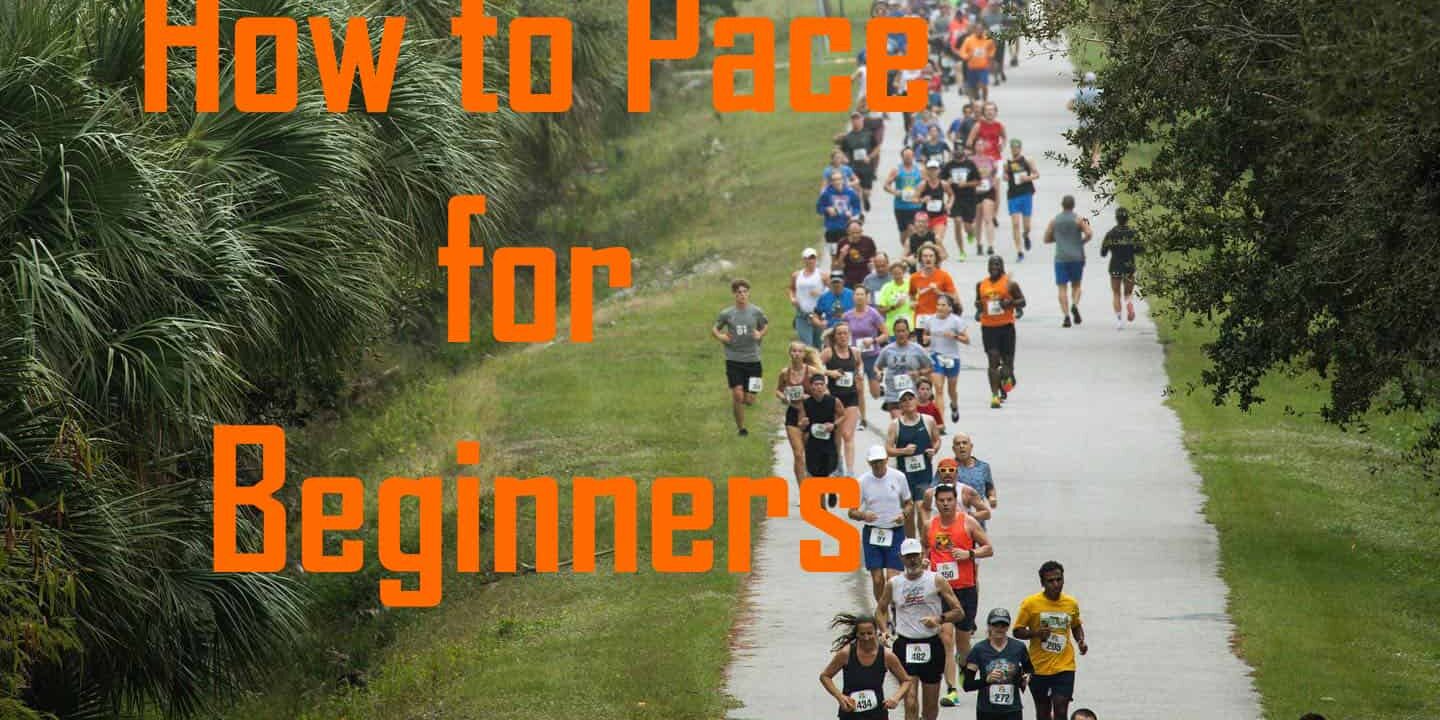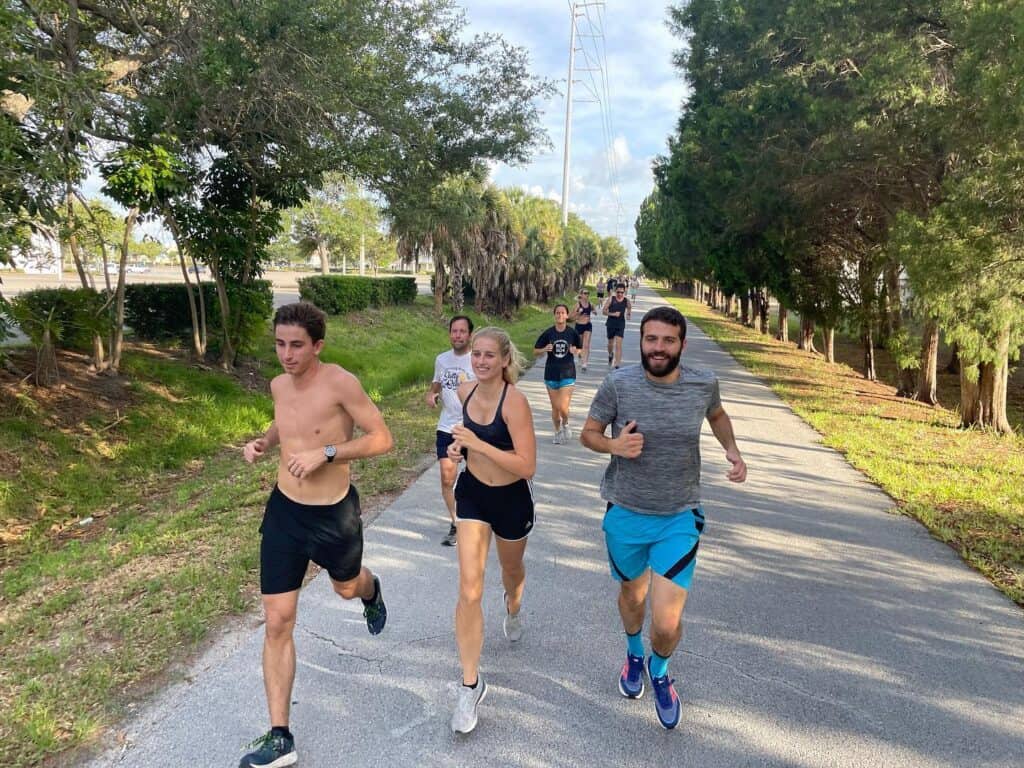How Do You Pace Yourself As a Beginner Runner?

Does this sound familiar?
You take your first jogging steps and it’s exciting! You’re out on your first run, the wind in your face, and you’re feeling good. But as the minutes pass, you start to notice a heaviness in your legs. Suddenly, it’s as if someone covered your face with a wet towel and you’re trying to breathe through it. Where is that runner’s high everyone talks about?
How many can relate to this scenario?
Or maybe you’re at your first 5K race and you’re planning to run the entire course. You’ve gone through all the proper steps of selecting the best running shoes for you. The starter gun explodes and in the stampede of other runners, your feet carry you faster than you thought you could go. It feels great. Everyone around you is smiling and cheering each other on. It’s a thrilling rush that convinces you your speed is fine even though your smartwatch clocks you at a much faster pace than what you’ve done during training runs. Oh, well. It’s a race, after all. However, in a short time your breathing grows labored and you have to slow down. At the first mile marker, you’re at a slower pace than your training runs. Now you’re discouraged. You’re not even at the halfway point. By the end of the race, you’re dragging yourself across the finish line wondering what went wrong.

A Steady Pace Keeps You Going
Why is pacing so important for runners? Because burning out on a run will happen fast when your pacing is off. Most runners have experienced this at one time or another, and it’s not a good feeling. We’ve got seven tips for beginner runners who want to learn how to properly pace. A consistent running pace takes time to master, but it’s worth it!
Seven Tips For Beginner Runners Who Want to Learn How to Pace
- 1. Purchase the best running shoes for you (not the most expensive shoes) – At St. Pete Running Company, we offer a FREE StrideSmart Fitting Process for anyone who wants a comprehensive analysis of their gait, stride, pronation, and physical/structural limitations in order to get your feet inside the best running shoes for you. Remember that the most expensive shoes are not necessarily the best shoes for you. Factors such as cushion level, neutral versus stability, and firmness level will impact your decision as we help you discover the running shoes that will make your feet happy.
- 2. Sign Up For a Running Class – At St. Pete Running Company, we offer a Running Class for Beginners at regular intervals throughout the year. Visit our Facebook page or the Community Events calendar on our website to find out about upcoming running classes.
- 3. Start Slow – One mistake many beginner runners make is trying to run too fast too soon. A slow and steady pace is ideal for new runners just starting out (anywhere from 11 – 14 minutes per mile pace depending on the athlete). This can absolutely include walking intervals! When you start slow, you can better recognize how your body is functioning at a certain pace, and determine if you’re able to increase speed or need to decrease speed in order to complete the run. When you can jog and have a conversation at the same time, that’s a great indicator that you’re at a nice and steady pace for you. Start there for your first few runs.
- 4. Build Up – Distance running takes time to build up endurance. It’s also a matter of learning about your body and what pace is ideal for your current level of fitness. Plus every run includes a goal to complete. Maybe you’re building up to a full mile. Don’t expect to get there on the first run! Give yourself time to build up endurance. Practice varying up shorter and longer distances throughout the week. Don’t be afraid to make one day your walking-only day. Once you reach a goal, such as completing a full mile without stopping, set your next goal. Go for two miles, but again, give yourself time to build up to that next level. You’ll be amazed at what your body can do when you learn how to pace yourself.
- 5. Determine Your Goals – Are you hoping to run your first 5K? Or maybe you’re running or walking for the health benefits? Whatever your goals, it helps to have them in mind as you plan your running schedule. As you practice pacing yourself for each distance you’ll be running, or walking, you’ll also discover how long each workout will take you to complete. On race day, don’t make the mistake of taking off from the start line too fast! Stick to the pace that you’ve practiced. And then as you get your rhythm going, you might be able to speed up later in the race.
- 6. Invest in a Smartwatch – It truly helps to have a smartwatch during your training runs so that you can see what pace you’re running. Visit St. Pete Running Company where our expert staff members can help you find just the right smartwatch for you based on your goals and training level.
- 7. Join a Running Group – One of the best ways to learn how to pace? Join a group run! You’ll have an opportunity to meet runners and walkers who are at your same level, and you can help pace each other. Every Monday and Thursday at 6:30 PM we host at Group Run at St. Pete Running Company, and we’d love to have you join us! We’re all here to learn together.


Do you have more questions about how to pace yourself as a beginner runner? We can help! Call or come into the store where our shoe and running experts are ready to provide the high-quality customer service you expect from a Top 50 Running Store in America.










